 Auxiliary Fan / Low Speed Ballast Resistor
Auxiliary Fan / Low Speed Ballast Resistor Auxiliary Fan / Low Speed Ballast Resistor
Auxiliary Fan / Low Speed Ballast Resistor9-02-2001
The auxiliary fan should always come on at low speed whenever the a/c & ignition are on. If not, Bentley covers the troubleshooting on pg. 170-7(e32). The first thing is to check to see if the aux. fan motor runs using a jumper wire on the aux. fan switch socket, located on the right side of the radiator:
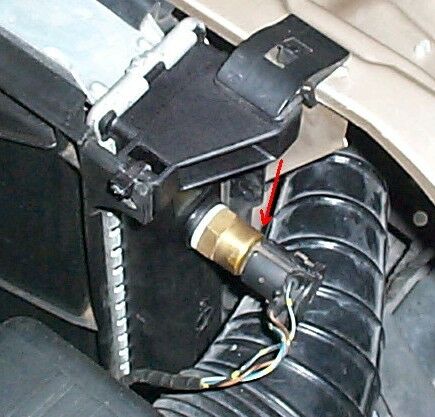
With the ignition on, jumper between the blue-white-yellow wire & black-brown, the fan should run on low:

A jumper between the black-grey-yellow wire & black-brown, the fan should run on high:

If the engine overheats, the temperature switch should automatically run the fan on at low at 196F (91C) and high at 210F (99C). Switches are available from BMP with lower temperature set values.
If it runs in high but not low, then the ballast resistor could be blown. If the fan does not run in either position, check fuse #25 (high) & #29 (low) in the main fuse box. Also check the relays in the relay panel in front of the left shock tower:
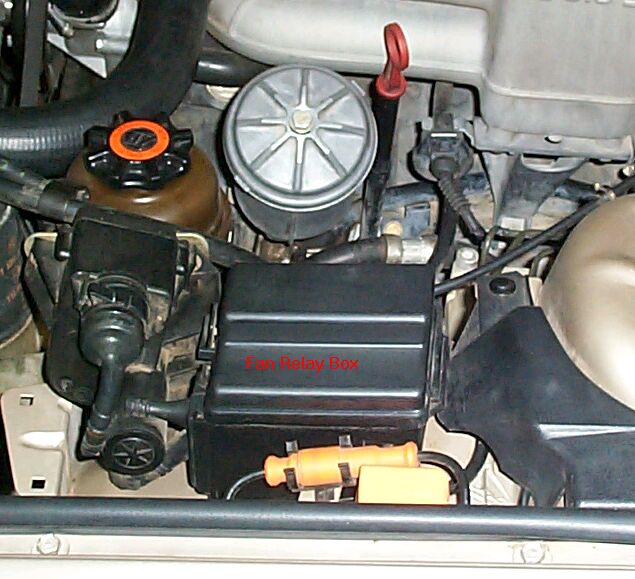
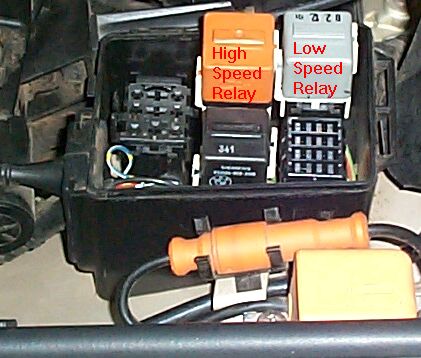
If it runs on low but keeps blowing fuse #29, then the ballast resistor may be shorted. Also check to see if the fan spins freely by hand. These fan motors have a history dislodging the magnets & physically locking the motor. New aux. fan assemblies are expensive (in excess of $400US). There is a repair for them but that will have to wait for another post. Direct replacement bolt-in aftermarket complete aux. fan assemblies are plentiful on e-bay for ~$125.
The ballast resistor is located at the outer perimeter of the aux. fan at about the 4 o'clock position:
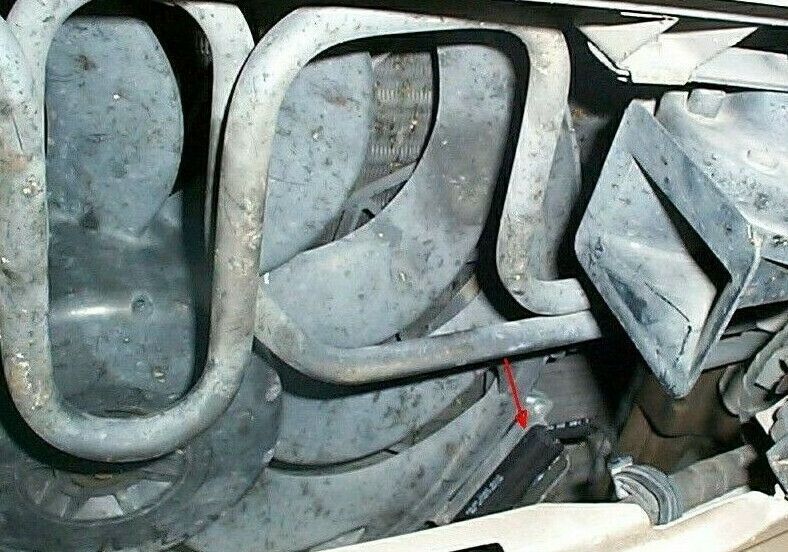
it is rated at .5 ohms x 85 watts. To access the ballast resistor, remove the "kidney grill". With the hood open, remove the two clips on the top of the grill & it will tilt forward & lift off from the front:
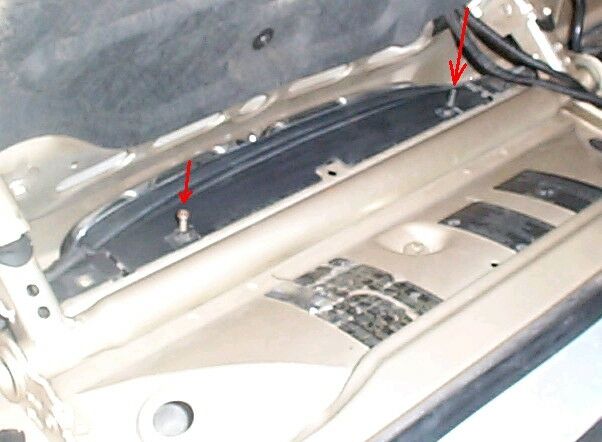

You can measure the resistance of the old one by unplugging the socket located behind the lower grill below the bumper:

To remove the lower grill, pry out the smaller grills adjacent to the fog lights:

Remove the 3 screws & clips on the underside of the bumper:

Insert a screwdriver into the crack & pry loose the two tabs on the top edge:

The bottom edge of the grill will pry out but will likely require more effort since it will be caked with bugs & dirt. There are 7 tabs on the bottom edge which push into the lower edge of the spoiler:

Unplug the socket & measure between the pins for the black & blue wires in the plug:

A good one should measure about .7 to .8 ohms. My old one measured 2.5 k-ohms in other words, basically open. A new ballast resistor, BMW part # 64 12 1 388 069 is $35.75 list (Siemens) at the dealer, $31.28 (Magna) at Zygmunts, & $21.29 (Bosch) at Zygmunts. There are alternatives but may be more trouble that it's worth. Low resistance, high wattage resistors are not common. You could use four 2 ohm x 25 watt ceramic resistors in parallel giving .5 ohms x 100 watt capacity, from an electronic surplus for about $.50 ea. I doubt Radio Shack would have any resistors more than 5 or 10 watts but you could use any combination to get .5 ohms & approx. 85 watts or better by wiring them in parallel where the total resistance R = 1/(1/r1 + 1/r2 + . . . + 1/rn). Also, ~1970 vintage Chryslers used a large ballast resistor on the ignition coil, on the order of .5 or 1 ohm but I'm not sure what wattage they would be rated at but I'm sure it's fairly high & they sell for about $5 at auto parts places. Here's a specific application and part number for a ceramic dropping resistor for an '82 Chrysler Cordoba: "Wells" brand, Part no. CR-107, cost is only $1.89. The ballast resistor is just for low speed, high speed is "direct-drive".
Note the OBC outside temperature sensor in the grill next to the right foglight:
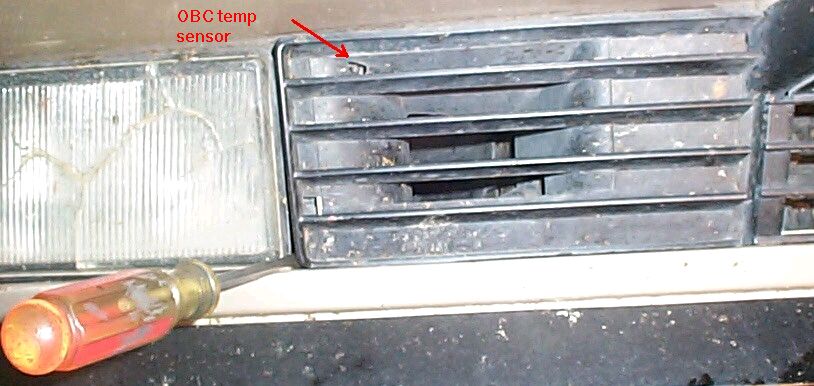
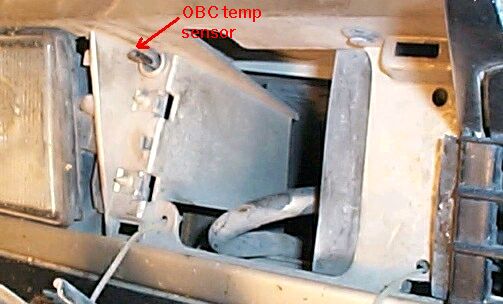
If removing the auxiliary fan entirely, it's easier to remove the front bumper. It comes off with 4 bolts & a few wires. Do a search on www.bimmer.info e34 archives to get details.
gale, 92 735i